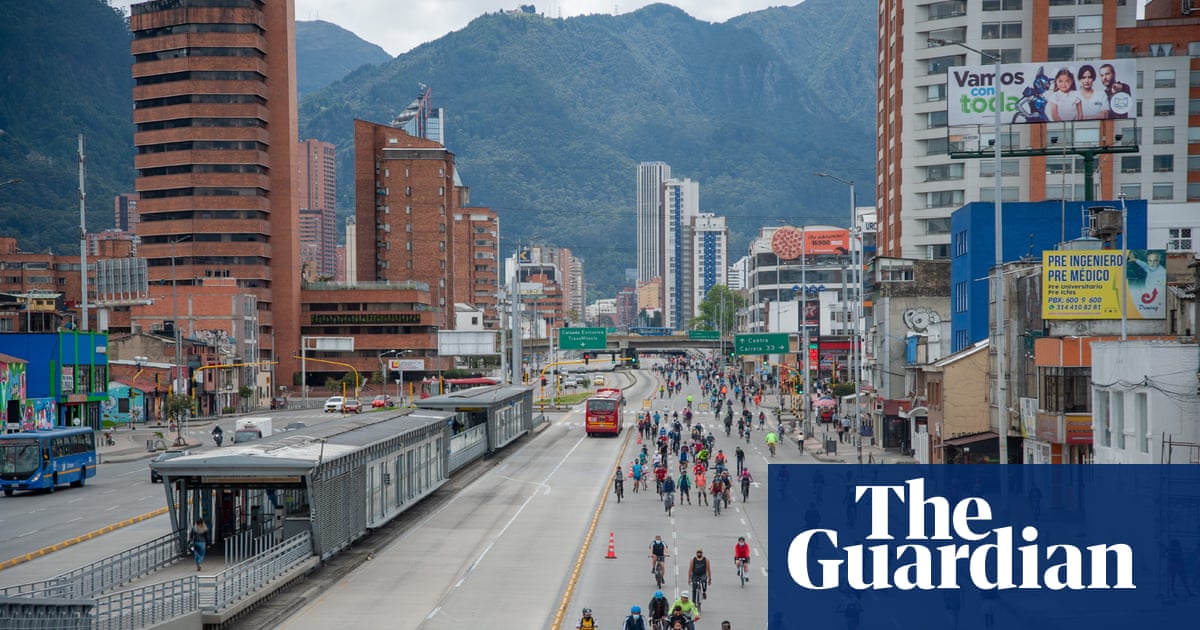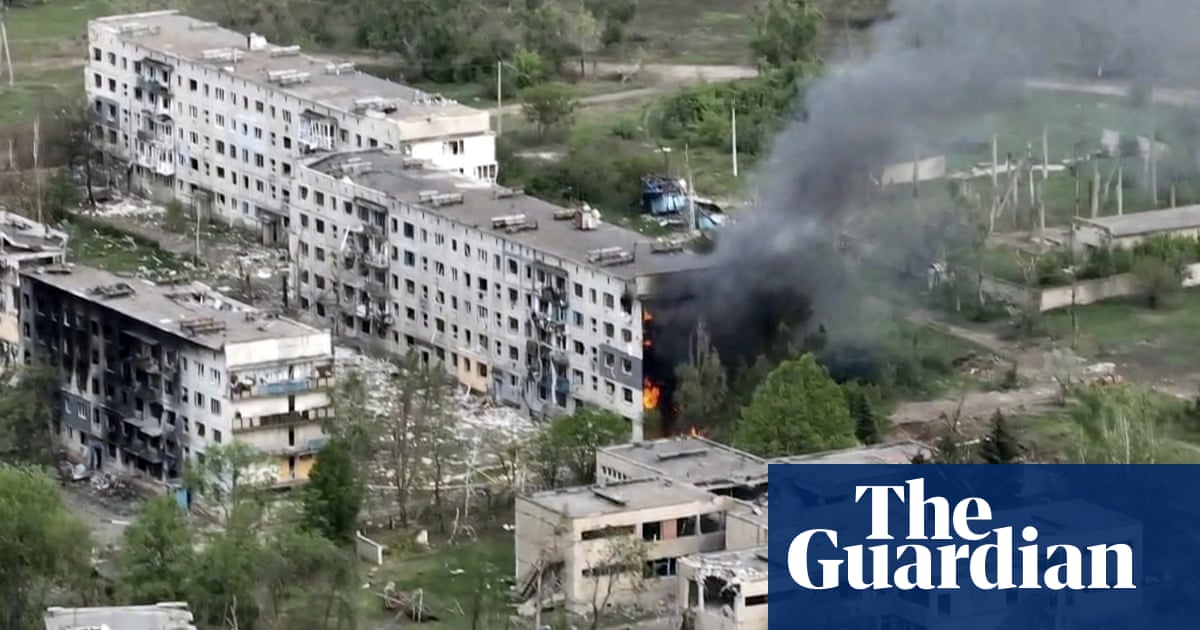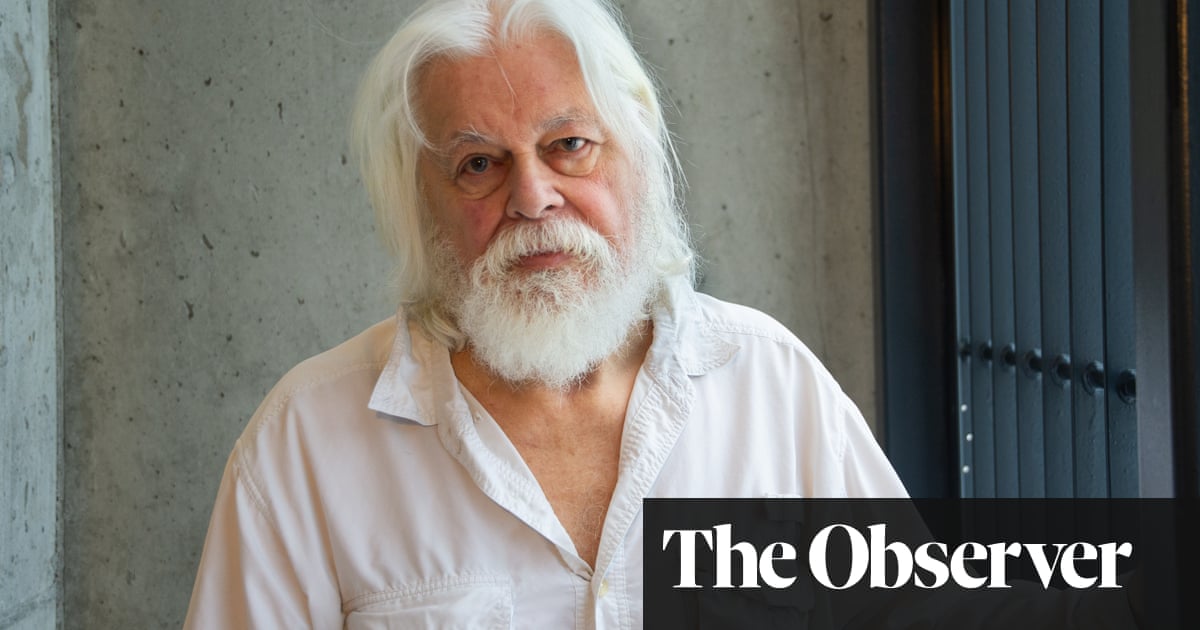Once a week the citizens of Bogotá take back the streets of their city. Every Sunday, between 7am and 2pm, many of the biggest roads are shut to cars and left open to bikes, skates and feet.
âCiclovÃa is really cool because there is a lot more space for us,â says seven-year-old Oliver Rojas, who is out cycling with his parents and is baffled to hear that this innovative scheme does not exist in the rest of the world.
Like many other children in the city, Rojas learned to ride a bike on the roads during the calm of CiclovÃa and has been out on them nearly every Sunday since.
âNormally itâs really annoying because we donât get any space with all the cars and motorbikes. Itâs really noisy. Sundays though are really fun. I get to see new parts of the city with my family and all my friends are out so I bump into them. We stop at the big parks. And I get to do spins.â
The weekly event was born out of a one-day protest in 1974 against cars taking over the worldâs streets. It now covers 127 km (79 miles) of streets in the city and, on average, 1.5 million Bogotanos use the CiclovÃa every Sunday. It has spread to most other Colombian cities and has been copied by mayors across the world, from Buenos Aires to Bengaluru, who hope the initiative can help get people in shape, improve mental health, reduce car usage and help fight climate change in the way that it has in Colombia.
âCiclovÃaâs impact has been truly amazing,â says Gil Peñalosa, a city planner in Canada who promoted the expansion of CiclovÃa when he was Bogotáâs commissioner of parks and recreation in the 1990s. âIf you had asked 40 years ago about Bogotá or Colombia around the world, people would have said coffee or drugs. Now people say CiclovÃa. Itâs got to be one of the best exports to come out of the country.â
Part of the attraction is the fun and the family-friendly atmosphere. Bogotáâs cycleways are punctuated with aerobics classes, people selling fresh juices, and the sound of salsa; itâs a space for the exercise-obsessed to stretch their legs and their lungs uninhibited by cars, but itâs also a safe place to teach the young the benefits of exercise.
As men in Lycra zoom past on $1,000 street bikes, children wobble cautiously around on their first bicycles. Itâs hard to measure how many people have taken up cycling as a result of CiclovÃa, as the scheme has been running on a large scale since the turn of the century, but surveys suggest it encourages people to learn to ride a bike or to get back on the saddle for the first time in decades.
People who use CiclovÃa are twice as likely to also use a bicycle in the week and 58% of CiclovÃa users say the scheme has motivated them to ride bikes more frequently, studies show.
The impact is larger for women, who are more put off riding a bike due to safety fears. While only 12% of Bogotáâs women use cycle lanes, 29.9% of women use the CiclovÃa.
âItâs a difficult phenomenon to study but I believe that CiclovÃa got a whole generation, particularly women, who would not have otherwise used a bike, to get into cycling,â said Olga Lucia Sarmiento, a professor at the School of Medicine at Bogotáâs Andes University.
Bogotáâs cycle lane network has expanded in the past decade to around 600km. Gil attributes the rapid growth in part to the popularity of CiclovÃa, which puts pressure on politicians to build cycle lanes.
People are often put off cycling in their cities as they believe it will take a long time to get from A to B by bike, Gil says. âBut when one is gliding along empty main roads during CiclovÃa, rather than crawling in snarling traffic jams, the metropolis feels a lot smaller.â
âPeople suddenly realise their city is smaller than they think it is, so as soon as good cycle lanes are offered people take them up,â Gil says.
The event brings down pollution. On a regular weekday, the level of PM 2.5 particles on the main road through Bogotá feels heavy on the lungs and is dangerously high at 65 µg/m3. During CiclovÃa, however, that number falls to 5 µg/m3 on the same stretch of road â 13 times less and in line with the WHOâs recommendations for the tiny, harmful particles. Noise levels are seven times lower.
âItâs really important to reduce these harmful chemicals, as when people exercise they pull more air into their lungs. But itâs also a big contribution to climate change, as for 52 days a year, plus public holidays, the air pollution plummets,â Sarmiento says.
Harder to measure but equally important is the impact on mental health and the community, and the way Bogotanos see their city. There is undoubtedly a strangely uplifting feeling when running down a six-lane major road usually dominated by cars, say regulars.
âItâs not just about the body, exercise or health,â says 42-year-old Norma Conde who began cycling on the CiclovÃa when she was a young girl and now brings her 10-year-old son, who whizzes ahead confidently in a Sonic the Hedgehog jacket. âItâs about the mind and the soul too. Breaking up the monotony, the stress of work, the hostility of all the cars and the chaos. Thereâs something about the tranquility and how it frees you. You can really feel it.â
âThe physical changes that CiclovÃa has on the streets are limited to one day a week, but it can change peopleâs perceptions of these spaces for ever. It allows people to conceive of new uses for urban space, changing peopleâs behaviours and what their perception of the city is,â says Sergio Montero, a geography professor at the University of Toronto Scarborough. âI donât think itâs a coincidence that Bogotá today is the city with the most bike lanes in Latin America.â
Perhaps the most important part of CiclovÃa, however, is that it builds a sense of community, says 47-year-old teacher, César Rojas.
âThere is so much inequality in Bogotá. One thing that allows people to feel Bogotano is the CiclovÃa because no matter how rich you are, and whether you are from the south or the north, the west or the east, you can go down any road and you will not be excluded,â Rojas said.



